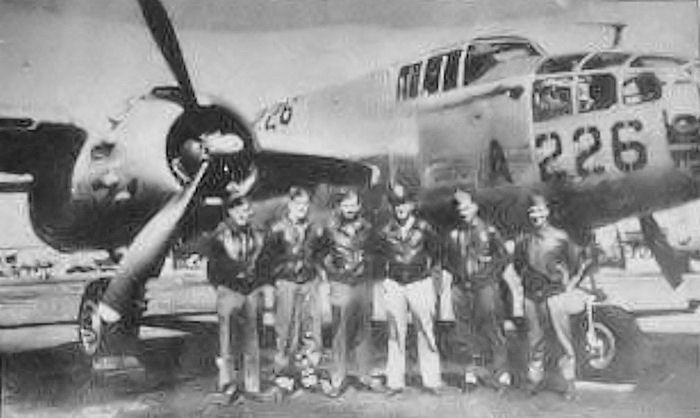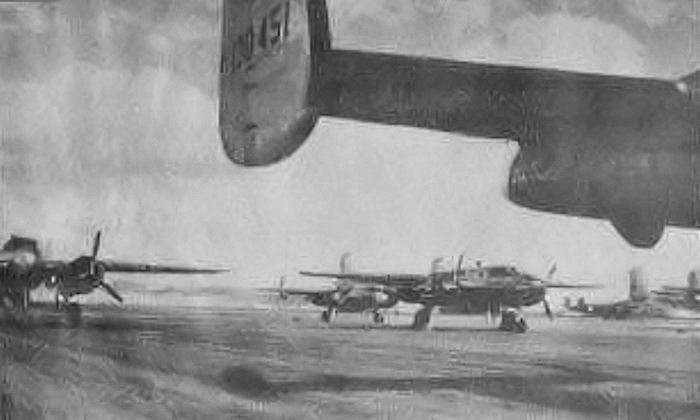Bisbee-Douglas International Airport on:
[Wikipedia]
[Google]
[Amazon]
Bisbee Douglas International Airport is a county-owned
Forrest Field
(Aux #2)
(Aux #3) * Auxiliary Field 4 is unknown *



 With the end of World War II, Douglas AAF was considered surplus to military needs and was transferred to local government authorities of the City of Douglas for conversion to a civilian airport.
With the end of World War II, Douglas AAF was considered surplus to military needs and was transferred to local government authorities of the City of Douglas for conversion to a civilian airport.
Douglas Army Airfield in World War II
Bisbee – Douglas International Airport (DUG)
at
Aerial image as of 8 October 1996
from
airport
An airport is an aerodrome with extended facilities, mostly for commercial air transport. Airports usually consists of a landing area, which comprises an aerially accessible open space including at least one operationally active surfa ...
northwest of Douglas
Douglas may refer to:
People
* Douglas (given name)
* Douglas (surname)
Animals
* Douglas (parrot), macaw that starred as the parrot ''Rosalinda'' in Pippi Longstocking
*Douglas the camel, a camel in the Confederate Army in the American Civi ...
and east of Bisbee, both in Cochise County
Cochise County () is a county in the southeastern corner of the U.S. state of Arizona. It is named after the Native American chief Cochise.
The population was 125,447 at the 2020 census. The county seat is Bisbee and the most populous city is ...
, Arizona
Arizona ( ; nv, Hoozdo Hahoodzo ; ood, Alĭ ṣonak ) is a state in the Southwestern United States. It is the 6th largest and the 14th most populous of the 50 states. Its capital and largest city is Phoenix. Arizona is part of the Fou ...
, United States, that was formerly known as Douglas Army Airfield (Douglas AAF). The FAA's National Plan of Integrated Airport Systems for 2009–2013 categorizes it as a ''general aviation
General aviation (GA) is defined by the International Civil Aviation Organization (ICAO) as all civil aviation aircraft operations with the exception of commercial air transport or aerial work, which is defined as specialized aviation services ...
'' facility.
History
World War II
Bisbee Douglas International Airport was constructed duringWorld War II
World War II or the Second World War, often abbreviated as WWII or WW2, was a world war that lasted from 1939 to 1945. It involved the vast majority of the world's countries—including all of the great powers—forming two opposing ...
as a U.S. Army Air Forces installation known as Douglas Army Airfield. Douglas AAF conducted advanced training in the AT-9 Jeep, AT-17 BobcT, and C-45 Expeditor
The Beechcraft Model 18 (or "Twin Beech", as it is also known) is a 6- to 11-seat, twin-engined, low-wing, tailwheel light aircraft manufactured by the Beech Aircraft Corporation of Wichita, Kansas. Continuously produced from 1937 to November ...
training aircraft and the B-25 Mitchell bomber.
In addition to Douglas AAF, five auxiliary airfields were constructed in the area for emergency and overflow use:
* McNeal Field (Aux #1)
Forrest Field
(Aux #2)
(Aux #3) * Auxiliary Field 4 is unknown *
Hereford Army Airfield
Hereford Army Airfield is an abandoned military airfield located about west-southwest of Hereford, Arizona, United States.
Military use
The airfield was acquired by the War Department in August 1942 for use as an auxiliary air field for Doug ...
(Aux #5)
Historical airline service



 With the end of World War II, Douglas AAF was considered surplus to military needs and was transferred to local government authorities of the City of Douglas for conversion to a civilian airport.
With the end of World War II, Douglas AAF was considered surplus to military needs and was transferred to local government authorities of the City of Douglas for conversion to a civilian airport. American Airlines
American Airlines is a major airlines of the United States, major US-based airline headquartered in Fort Worth, Texas, within the Dallas–Fort Worth metroplex. It is the Largest airlines in the world, largest airline in the world when measured ...
served the airport as Bisbee/Douglas was a stop along a transcontinental multi-stop route. The carrier flew Douglas DC-3, Convair 240
The Convair CV-240 is an American airliner that Convair manufactured from 1947 to 1954, initially as a possible replacement for the ubiquitous Douglas DC-3. Featuring a more modern design with cabin pressurization, the 240 series made some inro ...
, and by 1952 Douglas DC-6
The Douglas DC-6 is a piston-powered airliner and cargo aircraft built by the Douglas Aircraft Company from 1946 to 1958. Originally intended as a military transport near the end of World War II, it was reworked after the war to compete with t ...
propliners with daily flights in each direction between the east coast and the west coast. In 1959 the westbound routing was New York Newark (EWR) – Philadelphia (PHL) – Washington D.C. (DCA) – Memphis (MEM) – Fort Worth (GSW) – El Paso (ELP) – Bisbee/Douglas (DUG) – Tucson (TUS) – Phoenix (PHX) – San Diego (SAN) – Los Angeles (LAX). By 1963, American was still serving the airport with two daily flights operated with the DC-6. The westbound routing was Dallas (DAL) – Midland/Odessa (MAF) – El Paso – Bisbee/Douglas – Tucson – Phoenix – San Diego – Los Angeles. American Airlines flights ended in 1965 and were replaced with commuter flights to Tucson and Phoenix provided by Apache Airlines using de Havilland Dove
The de Havilland DH.104 Dove is a British short-haul airliner developed and manufactured by de Havilland. The design, which was a monoplane successor to the pre-war Dragon Rapide biplane, came about from the Brabazon Committee report which, ...
aircraft.
The original Frontier Airlines (1950-1986)
Frontier Airlines is a major ultra-low-cost U.S. airline headquartered in Denver, Colorado. It operates flights to over 100 destinations throughout the United States and 31 international destinations, and employs more than 3,000 staff. The ca ...
briefly served Bisbee/Douglas in the early 1950s using DC-3s on flights to Phoenix, stopping at Nogales and Tucson, Arizona.
Apache Airlines service ended in 1970 and was followed by Cochise Airlines
Cochise Airlines was a commuter airline which was founded in 1971 in Tucson, Arizona. It operated until the early 1980s. Cochise linked small cities in Arizona with Phoenix, Arizona and Tucson, Arizona and also served southern California and Ne ...
which served the airport from 1971 through 1975 using de Havilland Twin Otter
The de Havilland Canada DHC-6 Twin Otter is a Canadian STOL (Short Takeoff and Landing) utility aircraft developed by de Havilland Canada, which produced the aircraft from 1965 to 1988; Viking Air purchased the type certificate, then restarted ...
s.
Copper State Airlines provided service from 1980 through 1982 using Piper Navajo
The Piper PA-31 Navajo is a family of cabin-class, twin-engined aircraft designed and built by Piper Aircraft for the general aviation market, most using Lycoming engines. It was also license-built in a number of Latin America
Latin Ameri ...
s.
Sierra Vista Aviation was the final carrier at Bisbee/Douglas from 1983 through 1987 also using Piper Navajos.Official Airline Guide
Facilities
The airport covers at anelevation
The elevation of a geographic location is its height above or below a fixed reference point, most commonly a reference geoid, a mathematical model of the Earth's sea level as an equipotential gravitational surface (see Geodetic datum § Ver ...
of 4,154 feet (1,266 m). It has two asphalt
Asphalt, also known as bitumen (, ), is a sticky, black, highly viscous liquid or semi-solid form of petroleum. It may be found in natural deposits or may be a refined product, and is classed as a pitch. Before the 20th century, the term ...
runway
According to the International Civil Aviation Organization (ICAO), a runway is a "defined rectangular area on a land aerodrome prepared for the landing and takeoff of aircraft". Runways may be a man-made surface (often asphalt, concre ...
s: 17/35 is 7,311 by 100 feet (2,228 x 30 m) and 8/26 is 5,000 by 75 feet (1,524 x 23 m).
In the year ending March 31, 2009 the airport had 19,650 aircraft operations, average 53 per day: 71% general aviation
General aviation (GA) is defined by the International Civil Aviation Organization (ICAO) as all civil aviation aircraft operations with the exception of commercial air transport or aerial work, which is defined as specialized aviation services ...
and 29% military. 19 aircraft were then based at the airport: 95% single-engine and 5% multi-engine.
See also
*List of airports in Arizona
This is a list of airports in Arizona (a U.S. state), grouped by type and sorted by location. It contains all public-use and military airports in the state. Some private-use and former airports may be included where notable, such as airports that w ...
* Arizona World War II Army Airfields
During World War II, the United States Army Air Forces (USAAF) established numerous airfields in Arizona for training pilots and aircrews of USAAF fighters and bombers.
Most of these airfields were under the command of Fourth Air Force or the ...
* 37th Flying Training Wing (World War II)
References
* Manning, Thomas A. (2005), ''History of Air Education and Training Command, 1942–2002''. Office of History and Research, Headquarters, AETC, Randolph AFB, Texas * Shaw, Frederick J. (2004), ''Locating Air Force Base Sites, History’s Legacy'', Air Force History and Museums Program, United States Air Force, Washington DC.External links
Douglas Army Airfield in World War II
Bisbee – Douglas International Airport (DUG)
at
Arizona DOT
The Arizona Department of Transportation (ADOT, pronounced "A-Dot") is an Arizona state government agency charged with facilitating mobility within the state. In addition to managing the state's highway system, the agency is also involved with p ...
airport directory
Aerial image as of 8 October 1996
from
USGS
The United States Geological Survey (USGS), formerly simply known as the Geological Survey, is a scientific agency of the United States government. The scientists of the USGS study the landscape of the United States, its natural resources, a ...
''The National Map
''The National Map'' is a collaborative effort of the United States Geological Survey (USGS) and other federal, state, and local agencies to improve and deliver topographic information for the United States. The purpose of the effort is to pro ...
''
{{authority control
Airports established in 1908
1942 establishments in Arizona
Airports in Cochise County, Arizona
World War II airfields in the United States
Airfields of the United States Army Air Forces in Arizona
USAAF Western Flying Training Command
American Theater of World War II
1928 establishments in Arizona